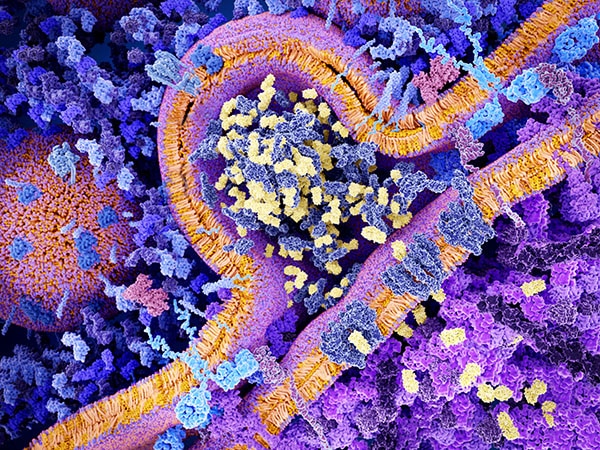Advocate Voices: Teal Boots on the Ground
In the coming months, we will share posts from advocates who participated in the AACR’s Scientist↔Survivor Program at the AACR Annual Meeting 2014 in San Diego, California. Today’s post is from Susan Leighton, national program director for the Ovarian Cancer National Alliance.

Susan Leighton, Scientist↔Survivor Program Advocate Mentor and national program director, Ovarian Cancer National Alliance
Coming to the end of nearly a decade as an ovarian cancer patient advocate, I realize that I am fast approaching the day when I will burn out, age out, or die with my teal boots on. (Teal, of course, is the color of ovarian cancer awareness.) Having participated in the AACR’s Scientist↔Survivor Program (SSP) twice in the past, I decided it was time to give back as a mentor to a new group of SSP participants at the AACR Annual Meeting 2014. One of the most important things experienced advocates can do is help prepare newer advocates to take an active role in research and communicate the priorities of our community to scientists, policymakers, and the public. I left for San Diego thinking that if I could help the members of my working group gain a better understanding of the research process and find ways to move forward in their advocacy work, I would accomplish what I wanted to do as a mentor.
The five participants in my working group were passionate advocates. They needed only a little guidance from me to get organized and ready for the program. I found myself learning from them and being inspired by their enthusiasm. It was fun to watch them go from being nervous about attending scientific sessions and their looming presentation to being active participants in all aspects of the program and conference.
With our group moving in the right direction, I began exploring the scientific posters and sessions. I knew that I would certainly learn much about work being done in ovarian cancer and could share that with my community. Over the years, I have seen an evolution of research in the ovarian cancer field. In the past, the number of sessions about the disease was relatively small when compared to other organ sites such as breast and lung cancer. Last year and even more so this year, the field has grown exponentially. No longer is ovarian cancer viewed as one disease with one solution; it is now viewed as several diseases with multiple pathways for exploration.
Perhaps the most exciting takeaway for the ovarian cancer community is the sense of urgency among the researchers and clinicians trying to tease out answers for screening and treatment of this devastating disease. It was such a positive experience to see collaboration between researchers, pharmaceutical companies, and government agencies driving research forward. An excellent example of this was presented in the session titled “Realizing Patient Benefit: Four-Year Results From the SU2C Dream Teams.” Gordon B. Mills, MD, PhD, co-leader of the Stand Up To Cancer PI3K Dream Team, discussed research that combines a PI3K inhibitor and a PARP inhibitor in high-grade serous ovarian cancer and triple-negative breast cancers. One of the unique aspects of this study is the collaboration of the team with two pharmaceutical companies simultaneously, which allowed the study of two agents in combination despite the fact that neither is yet approved by the Food and Drug Administration. Novartis developed BKM120, a PI3K inhibitor, and AstraZeneca developed olaparib, a PARP inhibitor. Preliminary results from the phase I trial results were presented at ASCO in May. I will be keeping an eye on this one – it could be a real home run for the teal team!



